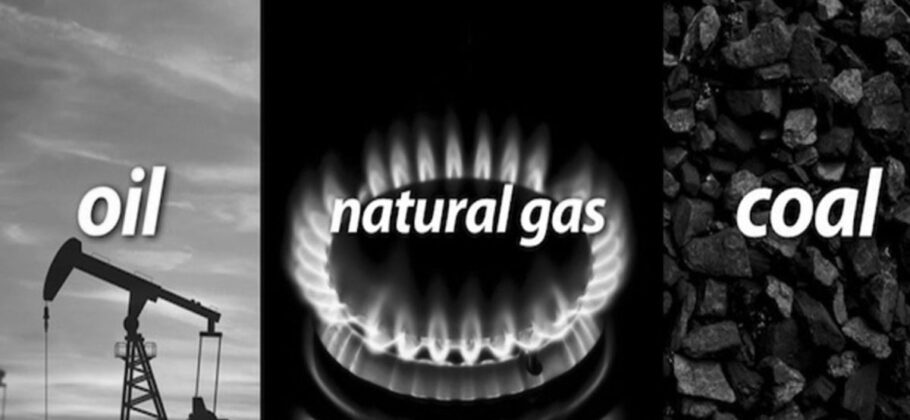The United States is now exporting close to 30 percent of all the energy it produces, according to the latest figures from the U.S. Energy Information Administration (EIA). The 2024 numbers represent a dramatic shift in the nation’s energy trade balance and highlight the country’s growing role as a global energy supplier.
Record Energy Production and Exports
In 2024, U.S. primary energy production reached a record 103 quadrillion British thermal units (quads). Of that total, a record 31 quads were exported, almost entirely in the form of fossil fuels such as crude oil, petroleum products, natural gas, and coal. These exports were shipped primarily to North America, Europe, and Asia.
The EIA noted that energy produced but not exported is not necessarily all consumed domestically, since imports and withdrawals from storage also factor into the balance. Nonetheless, the sheer volume of exports is historically significant, especially when compared with past decades when exports were only a fraction of today’s totals.
What’s Being Exported
The largest share of exports came from crude oil and natural gas plant liquids (NGPL), with 55 percent of domestic production leaving U.S. shores. That amounted to 10.8 million barrels per day of crude and petroleum products, including propane, distillate fuel oil, and gasoline. Most of this growth went to European and Asian markets, aided by the lifting of crude export restrictions in 2016, expanded infrastructure, and Europe’s 2022 ban on Russian seaborne crude imports.
Natural gas exports accounted for about 20 percent of U.S. dry gas production in 2024, totaling 7.7 billion cubic feet per day. Mexico led as the top importer with 31 percent of the total, followed by Canada at 13 percent and the Netherlands at 6 percent. Expanded liquefied natural gas (LNG) export capacity, combined with Europe’s push to replace Russian supplies, drove much of the increase.
Coal exports represented roughly 25 percent of total U.S. production, or 108 million short tons. India took 23 percent, China 12 percent, and Brazil 8 percent. While domestic coal use has declined due to power plant retirements, overseas demand has kept a steady export market alive.
Changing Import-Export Dynamics
The United States has steadily shifted from being a major net importer of energy to a significant net exporter over the past decade. The EIA’s data show that exports have grown faster than domestic demand, particularly for oil and gas, as production surged and imports fell.
Some energy experts point to this as proof of the country’s energy dominance strategy, emphasizing energy independence and geopolitical leverage. Others caution that high export levels could leave domestic markets more vulnerable to global price swings and supply disruptions.
Reactions and Implications
Supporters of the export surge argue it strengthens the U.S. economy, supports domestic jobs, and enhances national security by providing allies with alternatives to hostile suppliers. As one analyst put it, “Every barrel of oil or cubic foot of gas we sell abroad reduces the influence of regimes like Russia.”
Critics warn that prioritizing exports could tighten domestic supply in times of crisis and prolong reliance on fossil fuels at a time when global climate goals call for rapid reductions. Environmental groups say that record fossil fuel exports undermine U.S. commitments to emissions cuts.
The EIA’s proU.S. Exports Nearly One-Third of Its Energy Production, EIA Reports
The United States is now exporting close to 30 percent of all the energy it produces, according to the latest figures from the U.S. Energy Information Administration (EIA). The 2024 numbers represent a dramatic shift in the nation’s energy trade balance and highlight the country’s growing role as a global energy supplier.
Record Energy Production and Exports
In 2024, U.S. primary energy production reached a record 103 quadrillion British thermal units (quads). Of that total, a record 31 quads were exported, almost entirely in the form of fossil fuels such as crude oil, petroleum products, natural gas, and coal. These exports were shipped primarily to North America, Europe, and Asia.
The EIA noted that energy produced but not exported is not necessarily all consumed domestically, since imports and withdrawals from storage also factor into the balance. Nonetheless, the sheer volume of exports is historically significant, especially when compared with past decades when exports were only a fraction of today’s totals.
What’s Being Exported
The largest share of exports came from crude oil and natural gas plant liquids (NGPL), with 55 percent of domestic production leaving U.S. shores. That amounted to 10.8 million barrels per day of crude and petroleum products, including propane, distillate fuel oil, and gasoline. Most of this growth went to European and Asian markets, aided by the lifting of crude export restrictions in 2016, expanded infrastructure, and Europe’s 2022 ban on Russian seaborne crude imports.
Natural gas exports accounted for about 20 percent of U.S. dry gas production in 2024, totaling 7.7 billion cubic feet per day. Mexico led as the top importer with 31 percent of the total, followed by Canada at 13 percent and the Netherlands at 6 percent. Expanded liquefied natural gas (LNG) export capacity, combined with Europe’s push to replace Russian supplies, drove much of the increase.
Coal exports represented roughly 25 percent of total U.S. production, or 108 million short tons. India took 23 percent, China 12 percent, and Brazil 8 percent. While domestic coal use has declined due to power plant retirements, overseas demand has kept a steady export market alive.
Changing Import-Export Dynamics
The United States has steadily shifted from being a major net importer of energy to a significant net exporter over the past decade. The EIA’s data show that exports have grown faster than domestic demand, particularly for oil and gas, as production surged and imports fell.
Some energy experts point to this as proof of the country’s energy dominance strategy, emphasizing energy independence and geopolitical leverage. Others caution that high export levels could leave domestic markets more vulnerable to global price swings and supply disruptions.
Reactions and Implications
Supporters of the export surge argue it strengthens the U.S. economy, supports domestic jobs, and enhances national security by providing allies with alternatives to hostile suppliers. As one analyst put it, “Every barrel of oil or cubic foot of gas we sell abroad reduces the influence of regimes like Russia.”
Critics warn that prioritizing exports could tighten domestic supply in times of crisis and prolong reliance on fossil fuels at a time when global climate goals call for rapid reductions. Environmental groups say that record fossil fuel exports undermine U.S. commitments to emissions cuts.
The EIA’s projections suggest these trends will continue under current policies, with President Trump’s administration pushing for expanded drilling, LNG export approvals, and new offshore leasing. Whether this path is a long-term win for the U.S. economy and energy security—or a gamble with future stability—remains a matter of sharp debate.jections suggest these trends will continue under current policies, with President Trump’s administration pushing for expanded drilling, LNG export approvals, and new offshore leasing. Whether this path is a long-term win for the U.S. economy and energy security—or a gamble with future stability—remains a matter of sharp debate.





